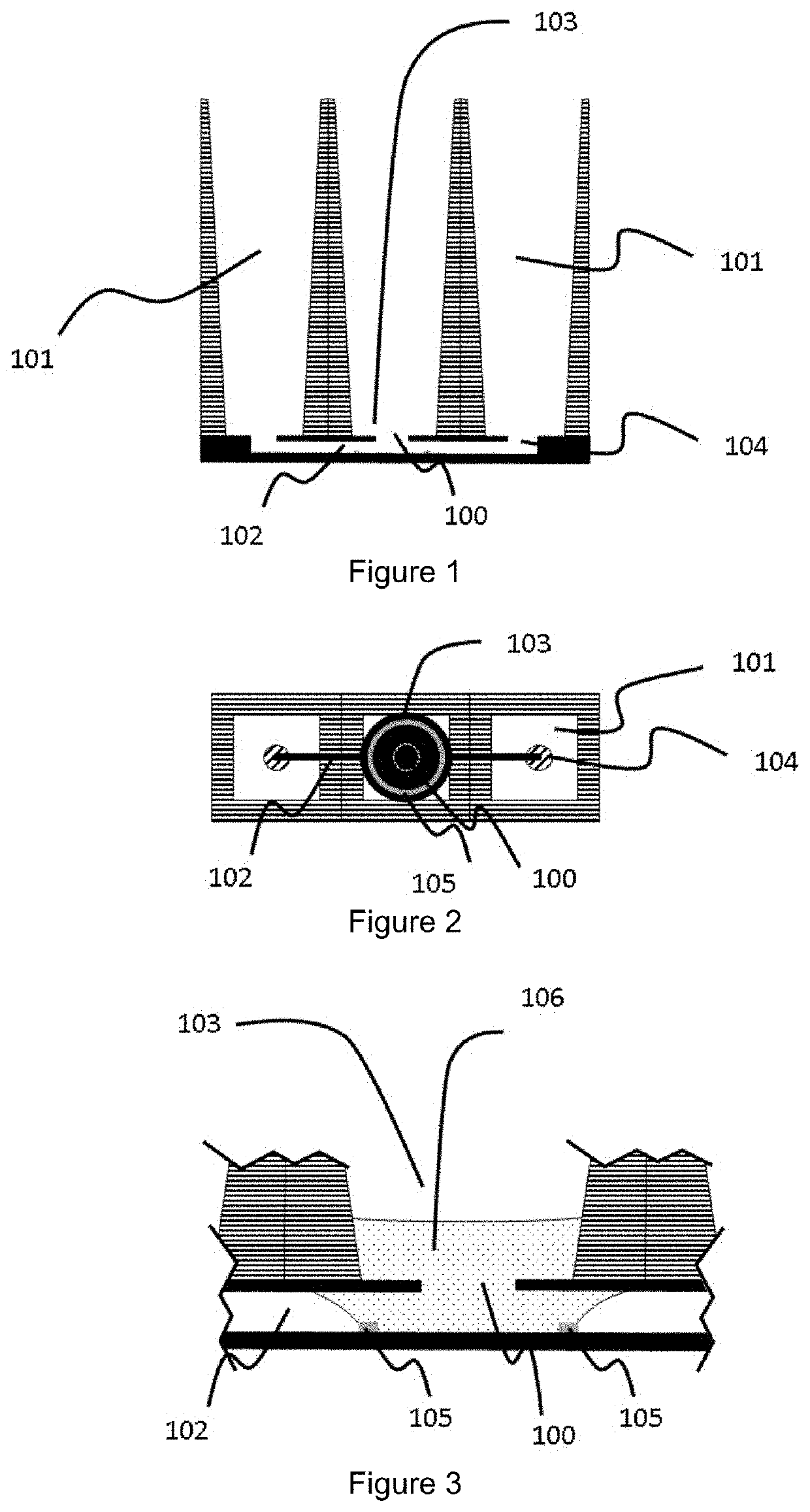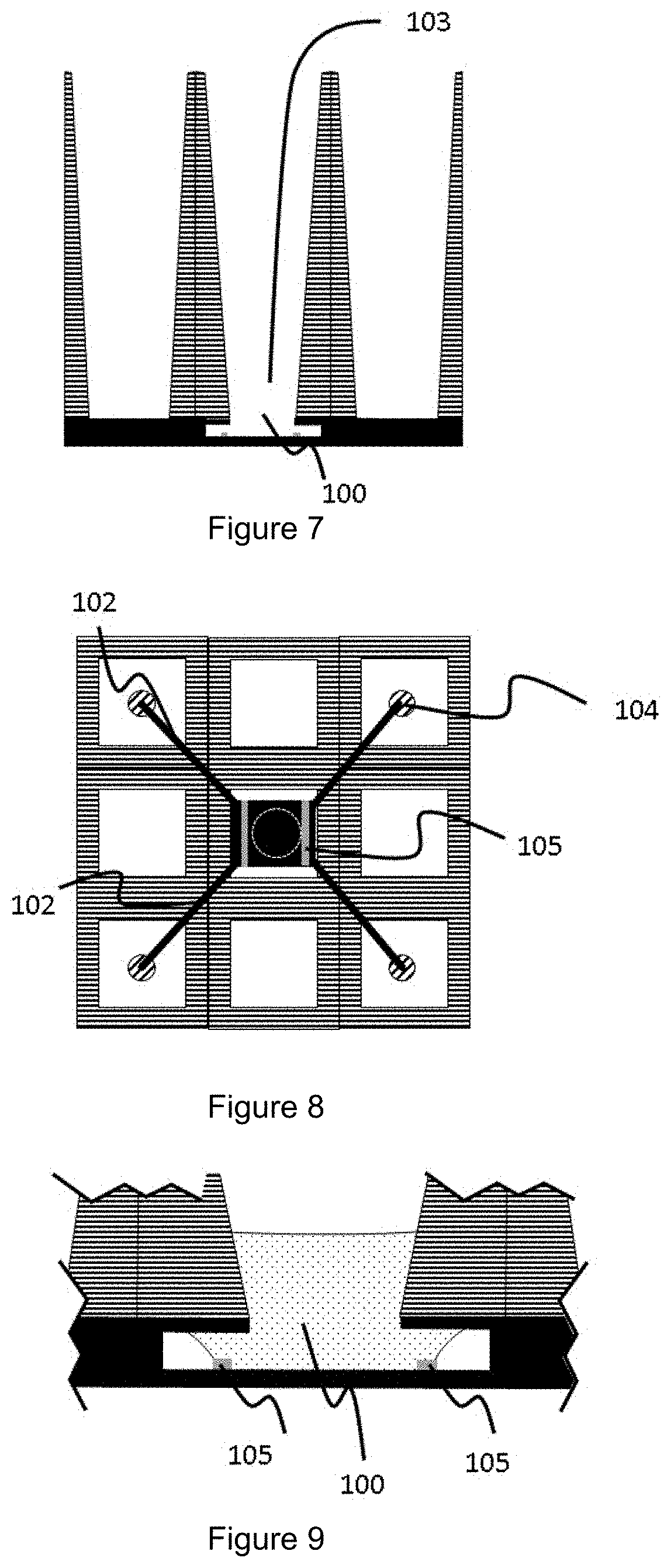Cell culture device and methods
- Summary
- Abstract
- Description
- Claims
- Application Information
AI Technical Summary
Benefits of technology
Problems solved by technology
Method used
Image
Examples
Embodiment Construction
[0214]The present invention will now be described by way of example only with reference to the drawings.
[0215]A first example of a cell culture device is schematically shown in FIGS. 1 to 3. The view across the device (FIG. 1) shows a central organoid compartment (103) flanked by two reservoirs (101) and a microfluidic channel (102) in a microfluidic layer (shown in solid) connecting the reservoirs with the organoid compartment via inlets (104) in the cover layer of the microfluidic layer. A capillary pressure barrier (105) is present at the base of the organoid compartment and accessible via aperture (100) in the cover layer of the microfluidic layer (shown in solid). In this particular example, the aperture is of narrower cross-section than the downwardly extending walls of the organoid compartment.
[0216]When charged with sufficient volume of the first liquid (the gel or gel precursor (106) (comprising one or more types of cells or cell aggregates, also termed the organoid composi...
PUM
 Login to View More
Login to View More Abstract
Description
Claims
Application Information
 Login to View More
Login to View More - R&D Engineer
- R&D Manager
- IP Professional
- Industry Leading Data Capabilities
- Powerful AI technology
- Patent DNA Extraction
Browse by: Latest US Patents, China's latest patents, Technical Efficacy Thesaurus, Application Domain, Technology Topic, Popular Technical Reports.
© 2024 PatSnap. All rights reserved.Legal|Privacy policy|Modern Slavery Act Transparency Statement|Sitemap|About US| Contact US: help@patsnap.com










